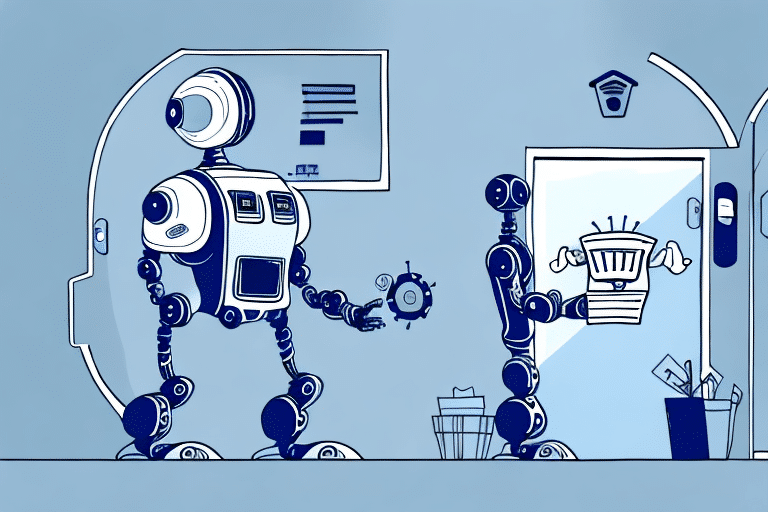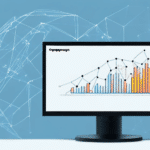Introduction to Ecommerce Marketing Automation
In today's digitally-driven economy, ecommerce isn't just an option; it's essential for any business aiming to grow. However, with numerous competing online stores, standing out and reaching the right audience can be challenging. Ecommerce marketing automation is a powerful tool that can transform your business operations. This article delves into the fundamentals of ecommerce marketing automation, its benefits, strategies, and best practices, equipping you with the knowledge to implement this approach effectively for your online store.
The Importance and Benefits of Ecommerce Marketing Automation
Ecommerce marketing automation is crucial for scaling your marketing efforts without compromising quality. By automating repetitive tasks such as email campaigns, social media postings, and lead nurturing, you can allocate more time and resources to high-impact activities like strategic planning, product development, and enhancing customer engagement. Furthermore, automation enables the delivery of personalized and relevant experiences to customers, boosting satisfaction, loyalty, and ultimately, sales. Key benefits include:
- Increased Efficiency and Productivity: Automating routine tasks allows you to focus on strategic initiatives that drive business growth.
- Improved Targeting and Personalization: Automation facilitates audience segmentation and the delivery of tailored messages that align with customer interests and preferences.
- Enhanced Customer Experiences: Personalized interactions foster stronger brand engagement and customer loyalty.
- Better Data Insights: Tracking customer behavior provides valuable insights to refine your marketing strategies and optimize campaign performance.
Developing Your Ecommerce Marketing Automation Strategy
Before implementing ecommerce marketing automation, it's essential to establish a solid strategy. This involves defining your target audience, setting clear goals, identifying your unique selling proposition (USP), and mapping out the customer journey. Here are key steps to crafting your strategy:
Define Your Audience and Buyer Personas
Create detailed buyer personas by researching your ideal customers' demographics, preferences, pain points, and behaviors. This understanding helps in crafting targeted and personalized messaging that resonates with your audience and drives engagement.
Set Goals and Objectives
Establish specific, measurable goals for your automation efforts, such as increasing website traffic, boosting conversions, enhancing customer retention, or reducing cart abandonment rates. Clear objectives allow you to track progress and optimize campaigns effectively.
Identify Your Unique Selling Proposition (USP)
Your USP differentiates your brand from competitors. By clearly defining what makes your brand unique, you can create a compelling value proposition that attracts and retains customers.
Map Out Your Customer Journey
Understand the path customers take from awareness to purchase and beyond. Mapping the customer journey helps in delivering relevant messages at each stage, guiding customers smoothly through the sales funnel.
Implementing Ecommerce Marketing Automation Campaigns
Effective implementation of marketing automation involves personalizing campaigns, optimizing email marketing, integrating social media, and maintaining a seamless customer journey. Key components include:
Personalizing Your Ecommerce Marketing Campaigns
Leverage data and analytics to create highly targeted campaigns. Examples of personalization in marketing automation include:
- Sending personalized emails based on customer behavior and preferences.
- Offering product recommendations tailored to a customer's purchase or browsing history.
- Utilizing dynamic content to adjust website experiences based on factors like location or device.
Best Practices for Effective Email Marketing Automation
Email marketing remains a powerful tool in ecommerce automation. Adhere to best practices such as:
- Personalizing email content to align with subscriber interests.
- Crafting compelling subject lines to increase open rates.
- Segmenting your email list to send targeted messages to different audience groups.
- Testing and optimizing email elements like CTAs and content based on performance data.
Integrating Social Media into Your Automation Plan
Social media plays a vital role in engaging with your audience and driving traffic. Effective integration strategies include:
- Automating social media posts and scheduling for consistent online presence.
- Launching targeted campaigns based on user behavior and preferences.
- Monitoring engagement and follower growth through analytics tools.
- Utilizing social platforms to drive traffic and increase conversions on your website.
Tracking, Analyzing, and Optimizing Your Ecommerce Marketing Automation
Data tracking and analysis are essential for optimizing your marketing strategies. By monitoring key metrics, you can make informed decisions to enhance performance.
Tracking and Analyzing Data
Automated tools allow you to track various data points such as website traffic, conversion rates, click-through rates, and email engagement. Analyzing this data helps in identifying patterns and opportunities for improvement. Key metrics to monitor include:
- Conversion Rates: The percentage of visitors who complete desired actions like purchases or form submissions.
- Cart Abandonment Rates: The percentage of shoppers who add items to their cart but leave without completing the purchase. Strategies to reduce cart abandonment include sending reminder emails and offering incentives.
- Email Open and Click Rates: Indicators of how effectively your emails are engaging recipients.
- Customer Lifetime Value (CLV): The total revenue a customer is expected to generate during their relationship with your brand.
Measuring ROI of Ecommerce Marketing Automation
Evaluating the return on investment (ROI) of your automation efforts helps in understanding their effectiveness. Key metrics for measuring ROI include:
- Conversion Rates: Higher conversion rates often indicate successful campaigns.
- Cost per Acquisition (CPA): The cost associated with acquiring a new customer through marketing efforts.
- Customer Lifetime Value (CLV): Comparing CLV against cost metrics helps assess profitability.
Choosing the Right Tools and Platforms for Ecommerce Marketing Automation
Selecting the appropriate tools and platforms is crucial for successful automation. Consider the following factors:
- Features and Functionality: Ensure the platform offers the necessary features for your campaigns, such as email automation, CRM integration, and analytics.
- Pricing and Affordability: Balance your budget against the pricing plans of different platforms to find a suitable option.
- User-Friendliness: Choose platforms that are intuitive and easy to use without requiring advanced technical skills.
- Customer Support: Look for platforms that provide robust customer support, including tutorials, training, and technical assistance.
Popular ecommerce marketing automation tools include HubSpot, Marketo, ActiveCampaign, and Mailchimp.
Best Practices and Common Mistakes in Ecommerce Marketing Automation
To maximize the effectiveness of your marketing automation efforts, adhere to best practices and avoid common pitfalls:
- Don’t Over-Automate: Maintain a balance between automation and human interaction to keep your marketing personal and engaging.
- Focus on People, Not Just Technology: Remember that marketing automation is about enhancing customer experiences, not just utilizing tools.
- Leverage Data and Analytics: Regularly track and analyze data to continually optimize your campaigns for better performance.
Future Trends in Ecommerce Marketing Automation
Staying ahead of trends ensures your marketing strategies remain effective and competitive. Upcoming trends in ecommerce marketing automation include:
- Artificial Intelligence and Machine Learning: Enhanced personalization and predictive analytics driven by AI.
- Omnichannel Marketing: Seamless integration of online and offline channels to provide a unified customer experience.
- Advanced Analytics Tools: Real-time data tracking and analysis for more informed decision-making.
By following these guidelines and best practices, you can unlock the power of ecommerce marketing automation, elevating your online business to new heights. With the right tools, strategies, and approach, you can create personalized and engaging experiences for your customers, drive revenue and growth, and build a loyal customer base that keeps returning.






















